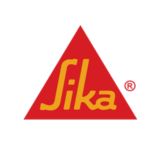What is an environmental product declaration (EPD)?
An environmental product declaration is a standardized document that summarizes the information on a product’s environmental performance. An EPD is based on the results of a life cycle analysis (LCA), which is a scientific approach to assess an environmental footprint in keeping with the internationally recognized ISO 14040 standard series. The declaration is drawn up according to a guideline that sets out standardized analysis and comparison rules for all types of building materials and products.
EPDs can be narrow in scope, covering the product stage only (“Cradle to Gate”), or can include the entire product life cycle (“Cradle to Grave”).
What does an EPD contain?
The EPD contains information about the product and its potential environmental impacts and benefits:
Technical information: Relevant product data and information
LCA information: Environmental impacts, e.g. Global Warming Potential, Cumulative Energy Demand, Acidification Potential, but also a description of the LCA process (data, methods, assumptions)
Other relevant environmental information (e.g. VOCs, hazardous materials, etc.)
Review and verification information: Information on the LCA consultant and the EPD program operator, and the external 3rd party EPD verifier.

